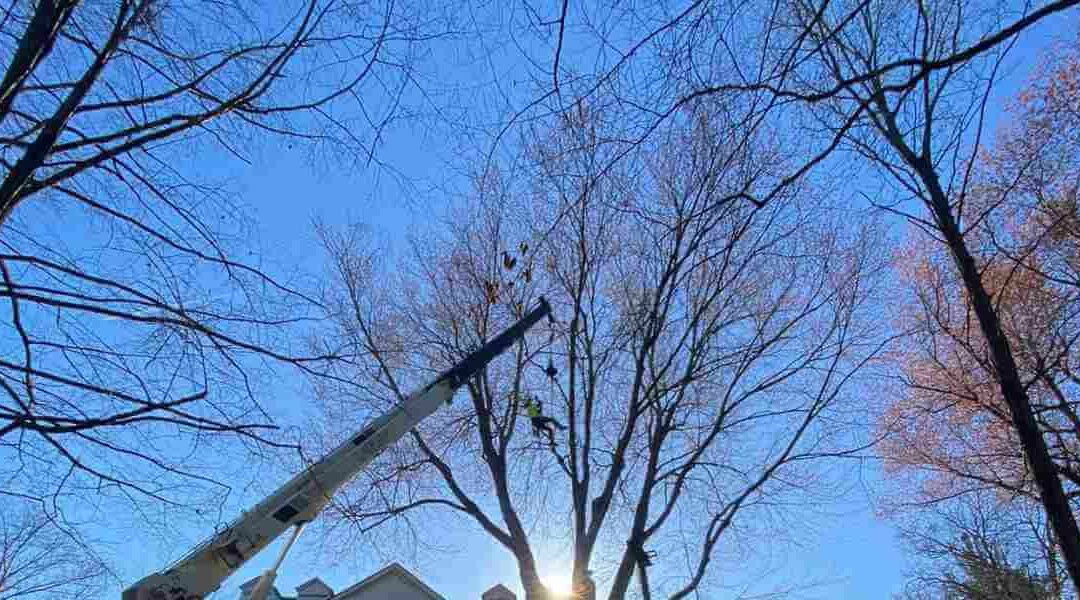As the top provider of expert tree services in Clarksville, IN, a question many property owners ask us at New Leaf Tree Service is, “Should you prune dead branches?” The short answer is yes — pruning dead branches offers a range of benefits that go far beyond aesthetics.
We’ll support the health of your trees, improve safety on your property, and enhance the aesthetic quality of your landscaping environment.
Why Prune Dead Branches?
Dead branches are more than an eyesore; they can rapidly cause significant problems. Here are some of the most important reasons to make proper pruning a regular part of your tree care routine.
Tree Health and Nutrient Distribution
Dead branches have forever stopped contributing to their tree’s growth. They do not come back to life and often divert resources away from healthy parts of the tree. Removing these branches allows a tree to focus its energy and nutrients on thriving areas. That’s especially important to promoting additional growth and a strong, healthy canopy.
Dead branches obstruct light and airflow within the tree’s canopy, which in turn creates favorable conditions for harmful fungal growth. Removing these branches promotes better air circulation and sunlight penetration.
Disease Prevention
Should you prune dead branches? Deadwood has no active immune system and attracts pests, fungi, and diseases. Certain insects like borers thrive in decaying wood and can spread their infestation to healthy parts of the tree.
Additionally, fungi that grow on dead branches eventually invade the rest of the tree, threatening its structural integrity. Routine pruning eliminates these risks and helps your trees ward off pests and infections.
Addressing Safety Hazards
Dead branches pose a serious safety risk. They can fall unexpectedly — especially during storms, snow, or high winds. Careful pruning of dead branches reduces hazards that can threaten your family and neighbors.
Additional Benefits of Pruning Dead Branches
In addition to promoting tree health and safety, pruning provides other advantages:
- Aesthetics. Properly pruned trees are simply more visually appealing. Especially for properties with precision landscaping features or fruit trees, pruning adds a spark to appearance and functional value.
- Increased property value. Healthy, well-maintained trees add to curb appeal and market value.
- Longevity. Proper pruning reduces tree stress. As discussed above, it reduces the risk of disease and pest infestations — increasing the tree’s lifespan.
When and How to Prune Dead Branches
When should you prune dead branches? Late winter or early spring often present the ideal time for pruning for most species. Doing the work while trees are dormant makes it easier to identify deadwood and reduces the risk of pest infestation.
Pruning is not as simple as grabbing a pair of shears and cutting away. Professionals use expert tools and techniques to avoid causing harm to the tree. Arborists follow best practices, including:
- Cut just outside the branch collar to promote faster healing.
- Avoid leaving stubs which can become entry points for diseases.
- Use the right tools like bypass pruners for small branches and a pruning saw for larger ones.
Choose New Leaf Tree Service for Complete Arborist Services
New Leaf Tree Service delivers high-quality tree care through our team of ISA-certified arborists who specialize in maintaining healthy, safe, and beautiful trees. Whether you need routine pruning or a comprehensive tree health assessment, we have the skills, expertise, and equipment to meet your needs.
Should you prune dead branches? Absolutely. Pruning maintains tree health, ensures proper nutrient distribution, addresses safety hazards, and prevents diseases. We invite you to read our other posts on important tree maintenance topics like understanding the key differences between pruning and trimming.
New Leaf Tree Service takes pride in offering expert tree care that enhances your property and safeguards the environment. Call us at (502) 419-9899 today to schedule your consultation!

